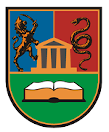Please use this identifier to cite or link to this item:
https://scidar.kg.ac.rs/handle/123456789/22327Full metadata record
| DC Field | Value | Language |
|---|---|---|
| dc.contributor.author | Arsić, Dušan | - |
| dc.contributor.author | Lazic, Vukic | - |
| dc.contributor.author | Ivković, Djordje | - |
| dc.contributor.author | Arsić, Aleksandra | - |
| dc.contributor.author | Bujnakova, Petra | - |
| dc.contributor.editor | Stefanovic, Miladin | - |
| dc.date.accessioned | 2025-05-20T10:10:54Z | - |
| dc.date.available | 2025-05-20T10:10:54Z | - |
| dc.date.issued | 2025 | - |
| dc.identifier.citation | D. Arsić, V. Lazić, Dj. Ivković, A. Arsić, P. Bujnakova, Analysis of savings potential through the application of welding repair for the revitalization of parts in construction machinery, Quality Festival 2025, Kragujevac, Serbia, 2025, 21-23 May, pp. 241-248, ISBN 978-86-6335-121-9 | en_US |
| dc.identifier.isbn | 978-86-6335-121-9 | en_US |
| dc.identifier.uri | https://scidar.kg.ac.rs/handle/123456789/22327 | - |
| dc.description.abstract | In modern industrial production, due to rigorous working conditions, machine parts frequently fail or wear out, leading to production downtime and financial losses. When a machine part becomes damaged, there are two options: replace the worn part with a new one or repair the damaged part through welding. Although purchasing a new part initially seems like a simpler and more reliable solution, many large industrial systems today opt for the regeneration of damaged components. This choice is driven by the multiple advantages that welding offers, not only from a technical perspective but also from an economic standpoint. This paper presents a procedure for determining the optimal technology for repairing various technical systems and provides an overview of potential monetary and time savings achievable through this technology. Costs and savings will be analyzed using the cost-effectiveness (profitability) method for different complex machine parts. All analyzed components were revitalized through welding. Along with restoring the operational capacity of machine parts, significant savings in both money and time were achieved. The welding technology quality was evaluated and verified through experimental research and monitoring the performance of repaired parts during operation. The savings achieved were calculated using the cost-effectiveness method and expressed in specific monetary values for each analyzed part compared to the costs of purchasing a new one. Overall, this paper represents a comprehensive technoeconomic analysis of welding in the repair of various machine systems. | en_US |
| dc.language.iso | en_US | en_US |
| dc.publisher | Center for Quality | en_US |
| dc.relation | TR35024 | en_US |
| dc.rights | Attribution-NonCommercial-NoDerivs 3.0 United States | * |
| dc.rights.uri | http://creativecommons.org/licenses/by-nc-nd/3.0/us/ | * |
| dc.subject | welding | en_US |
| dc.subject | repair | en_US |
| dc.subject | costs | en_US |
| dc.subject | savings | en_US |
| dc.subject | profitability | en_US |
| dc.title | Analysis of savings potential through the application of welding repair for the revitalization of parts in construction machinery | en_US |
| dc.type | conferenceObject | en_US |
| dc.description.version | Published | en_US |
| dc.identifier.doi | 10.24874/QF.25.021 | en_US |
| dc.type.version | PublishedVersion | en_US |
| dc.source.conference | Quality Festival 2025 | en_US |
| Appears in Collections: | Faculty of Engineering, Kragujevac | |
Files in This Item:
| File | Description | Size | Format | |
|---|---|---|---|---|
| 21-1_Arsic et al.pdf | 722.66 kB | Adobe PDF |  View/Open |
This item is licensed under a Creative Commons License


